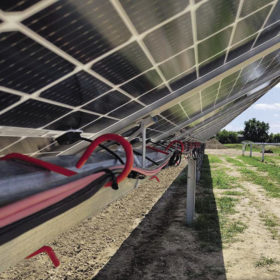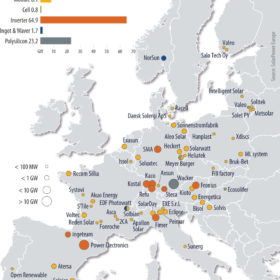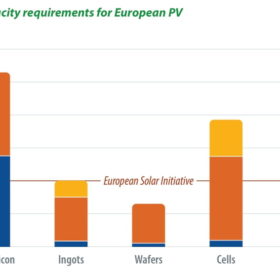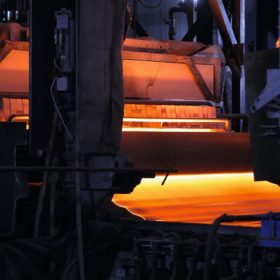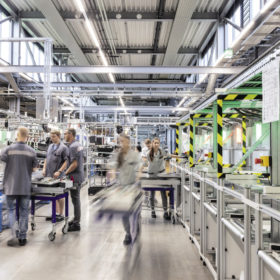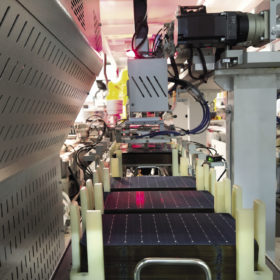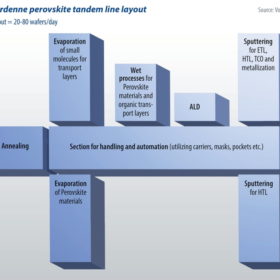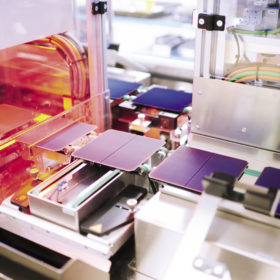Blocking the big winds
Several manufacturers now offer trackers fitted with blocking mechanisms to increase wind resistance and make trackers behave more like fixed structures. Some companies even retrofit such mechanisms to existing tracker projects. pv magazine Spain’s Pilar Sanchez Molina investigates the efficacy of blocking mechanisms and other strategies to deal with high wind loads.
Staying grounded
In the world of utility-scale solar development, with razor-thin margins to make multimillion-dollar assets financially viable, companies aggressively pursue innovations that reduce materials, cut labor costs, increase efficiency, or otherwise lead to higher yields. Cable management systems might not drum up the same excitement as new modules or trackers, but for the folks at CAB Solar, the 2021 pv magazine Award winner in the BOS category, the name of the game is proficiency, not publicity.
The great EU solar manufacturing reset
“We need to bring manufacturing back to Europe and the [European] Commission is willing to do whatever it takes to make it happen,” EU Energy Commissioner Kadri Simson said at the opening of SolarPower Summit 2022. Her words rocketed around the solar community, boosting share prices and invigorating the European solar industrial mission, writes SolarPower Europe CEO Walburga Hemetsberger, as she lays out the actions needed for solar-power EU energy independence.
Sustainable security with EU manufacturing
The role of sustainability in plans for European PV production is not merely significant – it’s existential. The raison d’être of a reborn manufacturing sector will rest on demand for products at a premium price point, given the pressures of environmental, social and governance standards on the global solar value chain. The industry must offer higher efficiency at a lower carbon footprint, while reducing reliance on foreign markets to provide regional security, reports pv magazine’s Blake Matich.
In for the long haul
Italian module materials manufacturer Coveme has weathered many a solar storm since the 1980s, when it commercialized its first backsheet. The president and founder of the company, Pier Luigi Miciano, shares some of the lessons learned, how the company embraces sustainability, the importance of re-establishing a European solar value chain, and what’s in store for the future.
The next bottleneck
Europe needs to build a solar industry across the entire value chain, including glass, argues Erich Merkle, the CEO of GridParity and a member of the Solar Glass Alliance. When people talk about the PV value chain, they often forget solar glass, which is the heaviest component, accounting for up to 80% of the weight of a standard PV module.
Survival of the fittest
Fronius International is an established EU solar manufacturer. The Austrian PV inverter maker has not only remained profitable over the years, but is also a leading sustainability champion – recognized in the 2021 pv magazine Awards when it was named the Publisher’s Pick. As part of the UP Initiative’s focus on EU manufacturing, the Fronius team talks survival strategies and the importance of adopting green production practices.
Decision time India
India is expanding solar cell production capacity in a big way. Will manufacturers go down the established mono PERC route or leapfrog to advanced n-type technologies? Uma Gupta investigates.
Making tandem cells stack up
Perovskite tandem technology is shaping as the route to PV cell efficiencies well beyond 27%. But building the tandem stack in a way that can be scaled into gigawatt production is not a trivial challenge, says Sebastian Gatz, VP photovoltaics for German equipment supplier Von Ardenne.
Light soaking promises gains for HJT
A number of recent studies have shown the potential of a light soaking stage to improve multiple cell characteristics in heterojunction cells, and provide a significant boost in efficiency and stability. Understanding the longer-term effects on cell structure will be key to developing a cost-effective, industrially applicable process.
